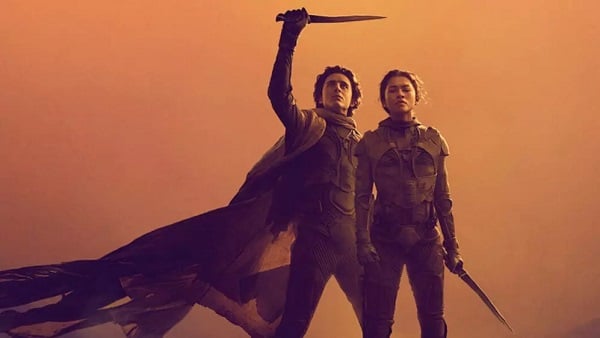Critics and audiences laud the sequel to Dune. I’ve found the comments (while overwhelmingly positive) to be a bit lazy, however.
T.E. Lawrence or King David?
One writer referred to Paul Atreides as “Lawrence of Arrakis,” insinuating that the main character played by Timothée Chalamet resembles real-life British army officer T.E. Lawrence, profiled in the 1952 film Lawrence of Arabia. See: White male with a savior complex leads a revolt of desert dwellers against an oppressive empire.
I acknowledge the connective tissue between the two but know of another historical figure much closer in comparison … King David from the Old Testament.
Quite simply, Dune: Part Two is one of the most religious films you will ever see.
So, that’s where the secular Lawrence of Arabia similarities for me end.
Faith in the Far Future
In the universe of Frank Herbert's original 1965 novel, set some 8,000 years in the future, the major religions as we know them today have faded away. However, a sense of the sacred, ritual, prophecy, prayer, and dreams nevertheless abound in a technologically advanced society.
In Herbert's books (but not in these movies), the Orange Catholic Bible preserves the both Abrahamic and Eastern sacred texts, in a blended formulation.
All characters’ actions within the epic, apart from one or two, are motivated by religion. Even the most fearsome of dictators turn to the counsel of various Bene Gesserit Reverend Mothers, esteemed leaders reading and interpreting prophecies (while conducting a vast genetic experiment to create a super-being).
The culminating scene incorporates elements of holy war and jihad so compellingly that it had me wishing I had been born in medieval times. The word count limit of this blog could not accommodate the instances of overt religiosity of both the books and the film.
Director Denis Villeneuve situates Paul Atreides fully within this robust religious culture.
Growing to Appreciate Chalamet
I initially thought Chalamet was a peculiar casting for the role. Having read the book long ago, I remember Atreides would grow up to lead an intergalactic revolution. I didn’t think Chalamet was capable of leading a group of teenagers in an after-hours break-in at the country-club pool.
But one forgets, David slew Goliath as a young man. Donatello’s sculpture of David as a scrawny youth fits Atreides from the first film. Paul comes of age through dutifully training with mentors and listening to the wisdom of his elders, namely his mother, Bene Gesserit Lady Jessica (Rebecca Ferguson).
From Donatello to Michelangelo
With the sequel, imagine Michaelangelo’s muscular and imposing David setting the characterization. Atreides enters the prime of his life having absorbed the ways of the desert and its peoples, offering a masterclass in enculturation.
Like David, he unites the North and South kingdoms and liberates his newly adopted peoples. Not to give away too much of the ending, but there was also a nod to another type of savior, with a scene of Atreides near death and resuscitation.
Dune 3 has already been announced. The third installment will be based on the second book, Dune: Messiah.
If true to the saga, the next film will relent in the bloodshed. The second book is more a tale of Atreides’ political maneuvering, in the same vein as Machiavelli’s The Prince. And for those fans of the romance in the first films we’ll see if (like David) Atreides’ straying eye can return home to his first love, Chani (Zendaya).
Image: (L-R) Timothée Chalamet, Zendaya, in 'Dune: Part Two.' PHOTO: Warner Bros.
Click here to visit Father Vince Kuna’s IMDB page.
Keep up with Family Theater Productions on our website, Facebook, Twitter and YouTube.
